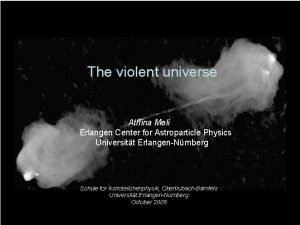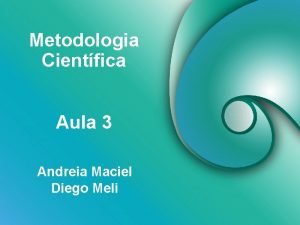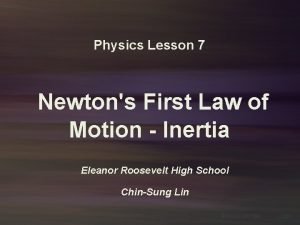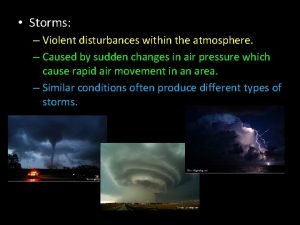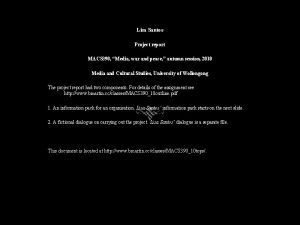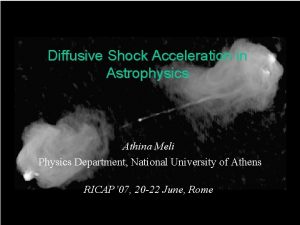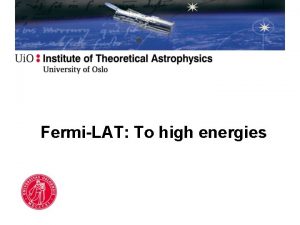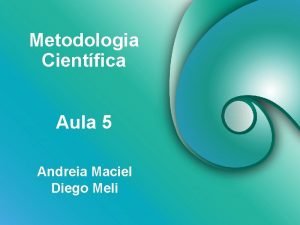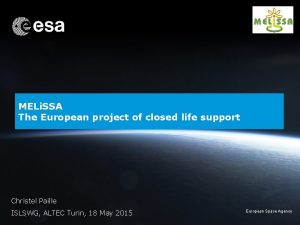The violent universe Athina Meli Erlangen Center for








![~E-2. 7 knee 1 part m-2 yr-1 LHC [T. Gaisser 2005] Ankle 1 part ~E-2. 7 knee 1 part m-2 yr-1 LHC [T. Gaisser 2005] Ankle 1 part](https://slidetodoc.com/presentation_image/8e724147320edfb74e5a2aa137df5185/image-9.jpg)
































- Slides: 41

The violent universe Athina Meli Erlangen Center for Astroparticle Physics Universität Erlangen-Nürnberg Schule for Astroteilchenphysik, Obertrubach-Bärnfels Universität Erlangen-Nürnberg October 2008

The spectrum of the electromagnetic radiation

Cosmic Rays • Cosmic Rays are subatomic particles and radiation of extra-terrestrial origin. • First discovered in 1912 by German scientist Victor Hess, measuring radiation levels aboard a balloon, up to 17, 500 feet (without oxygen!) • Hess found increased radiation levels at higher altitudes: named them Cosmic Radiation

• <1014 e. V (balloon experiments, satellites) • >1014 e. V (Ground arrays, large telescopes) -fluorescence light, -cherenkov emission • >1018 e. V (AGASA, Hires, Auger, Euso*)


The observed cosmic ray spectrum

Key features 10 decades of energy – 30 decades of flux E-2. 7 ‘knee’ 3 x 1015 e. V E-3. 1 above the knee 1016 e. V chemical transition 3 x 1018 e. V E-2. 7 ‘multi-ankle? ’ 1018 e. V – 1020 e. V Transitions: 1) nature of CR accelerators 2) propagation >6 x 1019 uncertainty (low flux, event st. )

![E2 7 knee 1 part m2 yr1 LHC T Gaisser 2005 Ankle 1 part ~E-2. 7 knee 1 part m-2 yr-1 LHC [T. Gaisser 2005] Ankle 1 part](https://slidetodoc.com/presentation_image/8e724147320edfb74e5a2aa137df5185/image-9.jpg)
~E-2. 7 knee 1 part m-2 yr-1 LHC [T. Gaisser 2005] Ankle 1 part km-2 yr-1 ~E-3 ~E-2. 7

…at the highest energies

The sources of cosmic rays

Galactic Vs Extragalactic Non-relativistic Vs Relativistic Requirements: -Dimension of magnetic field sufficient to contain the accelerating particles. -Strong fields with large-scale structure (astrophysical shocks) ISM-SN: (Lagage&Cesarsky, 1983) Wind-SN: (Biermann, 1993) AGN radio-lobes: (Rachen&Biermann, 1993) AGN Jets or cocoon: (Norman et al. , 1995) GRB: (Meszaros&Rees, 1992, 1994) Neutron stars: (Bednarek&Protheroe, 2002) Pulsar wind shock: (Berezhko, 1994) Hillas, 1984

Non-relativistic shocks in Supernovae SN 1987 A

Hadronic acceleration… Gamma-ray image of the SNR RX J 1713. 7 (G 347). Linear color scale is in units of counts. The superimposed (linearly spaced) black contour lines show the X-ray surface brightness as seen by ASCA in the 1– 3 ke. V range. HESS collaboration: Aharonian et al Nature 2004, 432, 75 – 77

Relativistic shocks in Active Galactic Nuclei (AGN) Central engine accretion disks, jets and hot spots 3 C 219

The unification model for all AGN

Gamma Ray Bursters Progenitors: • Binary neutron star merger • Collapsars (Wolf-Rayet stars) • Hypernova Radiation: • Internal-external shocks (fireball model)

Remark 1: -Presently, a good explanation/hypothesis is that all relativistic jets are created by similar MHD/electrodynamic processes -The basic configuration of differential rotation and twisted magnetic field accelerating a collimated wind can be achieved in all relativistic jet objects Pulsar magnetosphere, beyond the light cylinder Magnetized accretion disks around neutron stars and black holes Collapsing, magnetized supernova core Magnetospheres of Kerr black holes, with differentiallyrotating metric

Remark 2 : A universal mechanism seems to be responsible for astrophysical objects

Associating Cosmic Rays with the ‘Cosmic Messengers’

W. Wagner 05

Neutrino emission p + p p n + p p p p + p - + + e+ m e m - - m e - m High energy neutrinos from extragalactic neutrino sources: AGN (Protheroe, 1997) GRBs (Meszaros et al. 2004) Detectability: High energy neutrino telescopes (eg: Ice. Cube, Baikal, Antares, Nestor, etc)

The principle for high energy neutrino detection p … casc

Neutrino detectors • infrequently, a cosmic neutrino is captured in the ice or water, i. e. the neutrino interacts with an ice or water nucleus • in the interaction a muon (electron, tau) is produced interaction • the muon radiates blue light in its wake • optical sensors capture (and map) the light neutrino

Many prediction models…

Gamma ray emission “hadronic” e + B “leptonic” e + matter p+p p+ e + h

”leptonic” models e+ e – Jets ”hadronic” models e- p Jets syn. ?

Gamma-ray telescopes Ground based

Continuum emission Chandra XMM INTEGRAL HESS, CANGAROO GLAST IR optical Relative. Radio intensity of IC vs. pion -decay Obs. depends strongly on ambient conditions (mainly density). Broad-band models connecting Radio – X-rays – gamma-rays, in principle, can discriminate between IC and pion-decay + Neutrino observations (hadronic nature) synch IC pion brems

Key question: what is the “driving force” responsible for the very high energy of the ‘primary’ cosmic rays and the consequent emitted radiation ? Key answer: Fermi shock acceleration mechanism

Fermi acceleration mechanism • Second order Fermi acceleration (Fermi, 1949, 1954) - @ magnetic clouds • First order Fermi acceleration -diffusive acceleration- (Krymskii, 1977; Bell, 1978 a, b; Blandford&Ostriker, 1978; Axford et al. 1978) - @ plasma shocks Transfer of the macroscopic kinetic energy of moving magnetized plasma to individual charged particles non- thermal distribution

Second order Fermi acceleration • Observer’s frame: Particles are reflected by ‘magnetic mirrors’ associated with irregularities in the galactic magnetic field. Net energy gain. • Cloud frame: 1) No change in energy (colissionless scattering, elastic) 2) Cosmic ray’s direction randomised • If particles remain in the acceleration region for power law distribution : N(E) E-s s=1+1/ and (V/c)2 The average energy gain per collision: < E/E> = (V/c)2

First order Fermi acceleration 1970’s modification of general theory: Particles undergo a process on crossing a shock from upstream to downstream and back again (Supernovae shocks) Power-law distribution depends only on compression ratio, r : N(E) E-s s=(r+2)/(r-1), r=V 1/V 2 =( +1)/ ( -1) for mono-atomic gas =5/3 r=4 E-2 The average energy gain per collision: < E/E> = V/c Note: Only for non-relativistic shocks… V 1 upstream V 2 downstream

Shock waves ‘jump conditions’ mass momentum energy



Simulation studies, the primary’ accelerated particles and the diffuse spectrum UHECR proton acceleration applicable to AGN and GRBs Meli et al. (2007, 2008)

…and then neutrino fluxes Meli et al. ’ 08 acceleration model Becker&Biermann 08 diffuse neutrino flux prediction from UHECR correlation

…and consequent continuum radiation SED for 3 C 279 @z=0. 538 An example “toy” for a leptonic scenario (one -zone SSC model), by altering the primary electron spectral index HESS measuremets

A final thought The understanding of the very high radiation events, using cosmic-ray, neutrino and gamma-ray observations, will eventually bring us closer to a profound understanding of Cosmos…

Thank you
 Athina meli
Athina meli Character traits of romeo
Character traits of romeo Violent delights shakespeare
Violent delights shakespeare Lee radziwill époux
Lee radziwill époux Kolonie v africe
Kolonie v africe Diego meli
Diego meli Zehebe muzari fiil çekimi
Zehebe muzari fiil çekimi Hráči měli mezi sebou i dorostence
Hráči měli mezi sebou i dorostence Wasserspielplatz erlangen
Wasserspielplatz erlangen Docdaten
Docdaten Spielplatz eltersdorf
Spielplatz eltersdorf Player denotation and connotation
Player denotation and connotation Homestead strike timeline answer key
Homestead strike timeline answer key Vir form
Vir form Violent motion
Violent motion Uncontrolled, lacking in restraint
Uncontrolled, lacking in restraint Homestead strike 1892 definition
Homestead strike 1892 definition Positive connotation
Positive connotation Chapter 19 confusion dementia and alzheimer's disease
Chapter 19 confusion dementia and alzheimer's disease Do violent games cause violence
Do violent games cause violence Aristotle law of motion
Aristotle law of motion Violent vs nonviolent restraints
Violent vs nonviolent restraints Is a violent disturbance in the atmosphere
Is a violent disturbance in the atmosphere Xor in python
Xor in python Ptsd violent behavior
Ptsd violent behavior Violent downdrafts that are concentrated in a local area
Violent downdrafts that are concentrated in a local area Violent one hour
Violent one hour Non violent crisis intervention techniques
Non violent crisis intervention techniques Nvc cheat sheet
Nvc cheat sheet Pengertian model matematika
Pengertian model matematika Santos
Santos Thesis statement gun control
Thesis statement gun control Things fall apart chapter 16-19 summary
Things fall apart chapter 16-19 summary Ministerstyre för och nackdelar
Ministerstyre för och nackdelar Läkarutlåtande för livränta
Läkarutlåtande för livränta Vem räknas som jude
Vem räknas som jude Nyckelkompetenser för livslångt lärande
Nyckelkompetenser för livslångt lärande Sju för caesar
Sju för caesar Stig kerman
Stig kerman Modell för handledningsprocess
Modell för handledningsprocess Varför kallas perioden 1918-1939 för mellankrigstiden
Varför kallas perioden 1918-1939 för mellankrigstiden Stål för stötfångarsystem
Stål för stötfångarsystem
